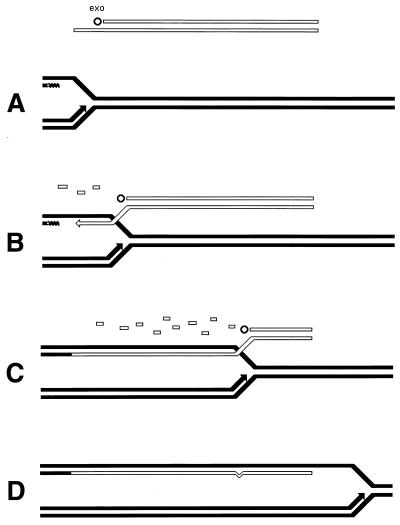FIG. 33.
Mechanism for the Red-mediated transduction in the absence of RecA. Open lines indicate the transducing duplex DNA; solid lines indicate the host chromosome; arrows indicate DNA synthesis at the 3′ ends; the circle indicates λ exo. (A) The transducing DNA is degraded by λ exo, while a replication fork is passing through the homologous region in the chromosome. (B) λ Beta catalyzes annealing of the transducing strand with the template for the lagging-strand DNA synthesis. (C) Assimilation of the incoming strand into the host DNA catalyzed by the combined action of λ exo and Beta. (D) The strand is completely assimilated. There is a heterology (shown as a bump) between the transducing DNA strand and the host DNA strand. This heterology is probably resolved by the next round of DNA replication, since the incoming DNA is likely to be fully methylated (a poor substrate for the methyl-directed mismatch repair [see “Damage reversal and one-strand repair”]).

